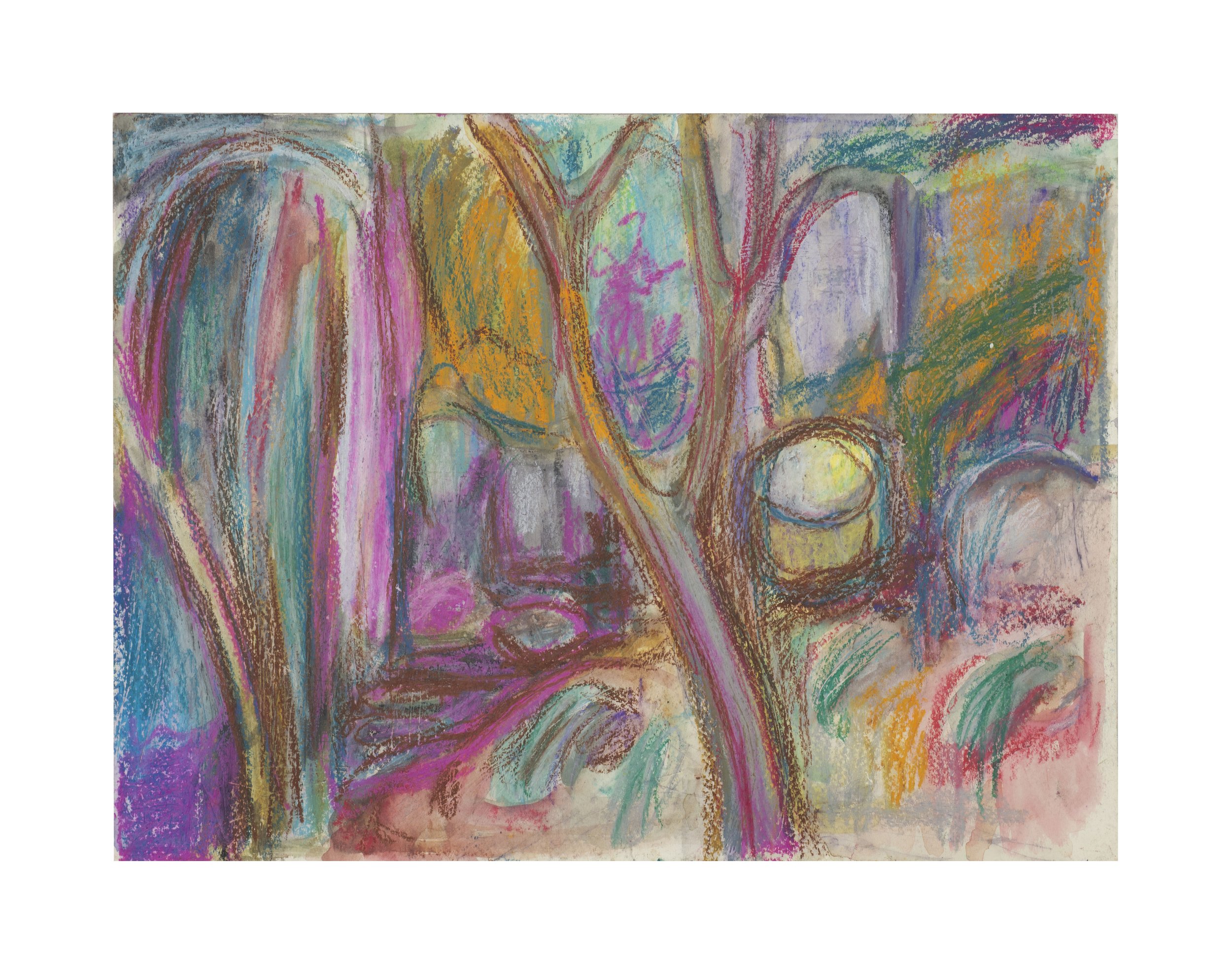Carole Gibbons, the groundbreaking and influential Glasgow based painter.
Artist and researcher Debi Banerjee shares highlights of her research into the career of Carole Gibbons, the groundbreaking and influential Glasgow based painter.
Carole Gibbons was born in Glasgow in 1935 and attended Glasgow School of Art, graduating in 1957. From her student days and throughout her artistic career she consciously set herself apart from her teachers and contemporaries, the exceptions being, in the early years, a close friendship with fellow students Alan Fletcher and Douglas Abercrombie. These three formed a tight knit group with a shared belief in their work and commitment to being artists.
Gibbons’ paintings are distinctive alongside the works of her peers. Her paintings burst with colour, they hint at narratives of both darkness and light. They are rich in symbolism and narrative, drawing on the motifs of art history and her personal stories. In her early works the focus is mythological, and although this shifts to a more domestic subject matter later in her career, the images of portraits, shells, horses, cats and creatures reappear throughout her work. The subjects – portraits of friends, figures, still lives, animals and landscapes are worked and reworked over months and years.
“No collection, no show of modern Scottish art is complete without a work by Carole Gibbons.”
In 1965, Gibbons had her first solo exhibition in her Glasgow studio where she sold some of her work to Douglas Hall, Keeper at National Galleries and Scottish poet and writer, J F Hendry. Hall continued to collect Gibbons’ work and Hendry became a significant supporter, encouraging her to move and make work in Spain, where she lived between1965-7. This was an influential experience as she refined the mythological paintings and consolidated the ‘stream of consciousness’ approach she had been experimenting with. The paintings of this period are infused with the light and landscape of Spain and saturated with expressive colour.
Gibbons returned to Scotland to discover a rapidly changing contemporary art scene catalysed by the establishment of the Scottish Arts Council in 1967. The subsequent emergence of new independent art galleries brought more opportunities for solo and groups shows outside of the annual institutional exhibitions and Gibbons’ career developed steadily from this point. Her work was reviewed in the national press and she was involved in a number of group exhibitions at Traverse Theatre, Edinburgh (1968), Compass Gallery, Glasgow (1970), NB Gallery, Gartocharn (1973), Third Eye Centre, Glasgow (1975), Leeds Gallery (1979) and the 369 Gallery, Edinburgh (1980). Gibbons’ solo exhibition at the Third Eye Centre (1975) was a career highpoint. She was the second woman artist to be shown there and the first living woman artist to have a solo exhibition. The exhibition focused on the still lives, domestic interiors and portraits Gibbons had been painting from 1973, the work she is perhaps most associated with.
Throughout her career Gibbons’ work has been championed by a number of individuals including, writer and critic, Cordelia Oliver, writer and artist, Alasdair Gray, gallerist, Andrew Brown and publisher, Bill Williams.
More recently Gibbons’ work has been brought to wider public attention by a new generation of artists namely through her friendship with the artist Lucy Stein. In 2012, Stein, showed her own work alongside Gibbons’ in two exhibitions, a group show, Strothwithe, Glasgow (2012) and Lucy Stein: Manderley with Carole Gibbons: Paintings and Drawings at Gimpel Fils, London (2012). Since these exhibitions Gibbons’ work has appeared in survey shows highlighting women artists including Studio 58: Women Artists in Glasgow since WW2 exhibition (Glasgow School of Art, 2012), 369 Remembered – The Women (Summerhall, Edinburgh, 2018) and Against All Odds (Beyond Borders, Traquair House, 2021).
Always fiercely independent, Carole Gibbons is an artist who has continually denied any gender labels that have been attached to her work instead she has insisted on being recognised as an artist rather than being categorised or marginalised by her gender. Although she is not as well known to contemporary audiences as some of her contemporaries, she is one of the most distinctive and interesting painters to have come out of Glasgow in the latter half of the 20th Century.
Debi Banerjee
Artist, Researcher and Curator 2021

